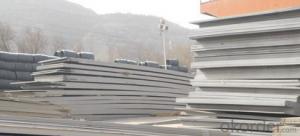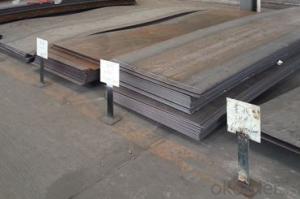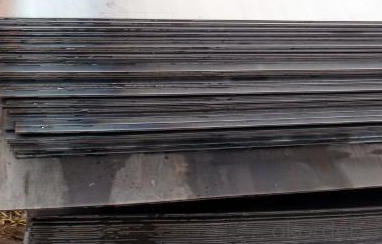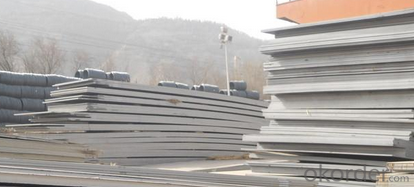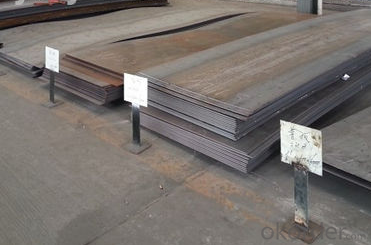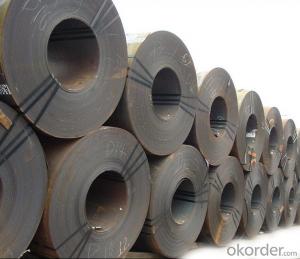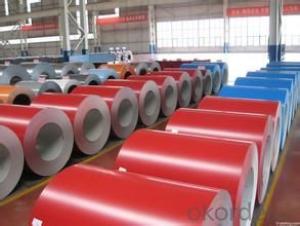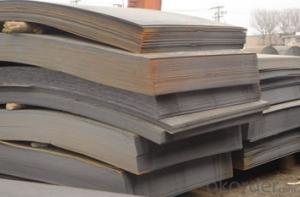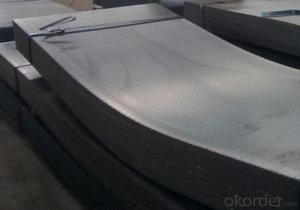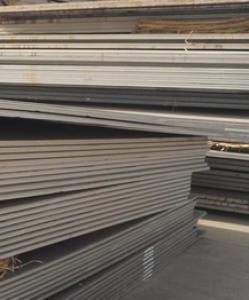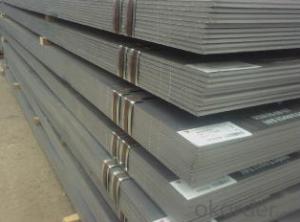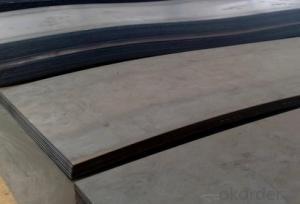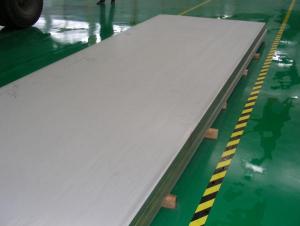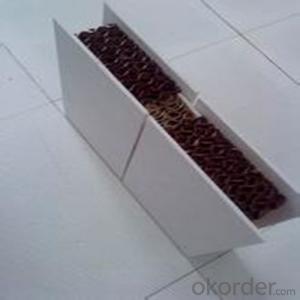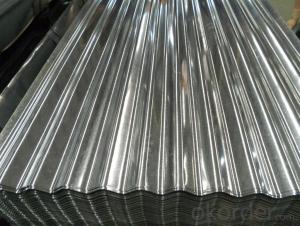Hot Rolled Carbon Steel Plate,Carbon Steel Sheet 2-12m, CNBM
- Loading Port:
- Qingdao
- Payment Terms:
- TT OR LC
- Min Order Qty:
- 10 pc
- Supply Capability:
- 30 pc/month
OKorder Service Pledge
OKorder Financial Service
You Might Also Like
Quick Details
| Standard: | AISI, ASTM, GB, JIS | Grade: | Q195,Q235,Q345,A36,C45 | Thickness: | 1.0-30MM |
| Model Number: | Q235,Q195,Q345 | ||||
| Type: | Steel Plate | Technique: | Hot Rolled | Surface Treatment: | Coated |
| Application: | Ship Plate | Special Use: | Silicon Steel | Width: | 30-2000mm |
| Length: | as your requirement | standard: | hot rolled | Surface: | Anti-rust oil |
Packaging & Delivery
| Packaging Details: | seaworthy packages or as customers' require |
| Delivery Detail: | within 15 days after the advance payment |
Hot rolled steel plate
1 carbon steel plate 3mm thick General information
| Product name | Type | Specification | Implementation of GB | ||
| thick | wide | long | |||
| Carbon structural steel | Q195,Q215, Q235A,Q235B, Q235C,Q255, Q275 | 4-120 | 1500-4500 | 6000-12000 | GB/T700-2006 |
| Low-alloy structural steel | Q295,Q345A, Q345B,Q2345C | 4-120 | 1500-4500 | 6000-12000 | BG/T1591-1994 |
| Quality carbon structural stee | 30-50 | 4-120 | 1500-4500 | 6000-12000 | BG/T699-1999 |
| Ship steel | CCSA,CCSB | 4-120 | 1500-4500 | 6000-12000 | materials and welding condition |
| CCSAH32,CCSAH36 CCSDH32,CCSDH36 | 4-120 | 1500-4500 | 6000-12000 | materials and welding condition or GB 712-2000 | |
| Boiler steel | 20g,22Mng, 16Mng,19Mng | 4-120 | 1500-4500 | 6000-12000 | GB 713-1997 |
| Pressure vessel steel | 1622Mng,20R, 15MnVR,15MnVNR | 4-120 | 1500-2700 | 6000-12000 | GB 6654-1996 |
| European standard plate
| S235JR,S235J0, S275JR,S275J0, S275JR2,S355JR, S355J0,S355J2 | 4-120 | 1500-4500 | 6000-12000 | EN 10025 |
| Japanese standard plate | SS400,SS400-B | 4-120 | 1500-4500 | 6000-12000 | JIS G3101-2004 |
2 carbon steel plate 3mm thick detail specification
Material:
A283Gr.D/A573Gr.65,A516Gr65,A516Gr70,A284Gr.D
SS400,SS300,CCSB A36,A32,LRA32,LRB,Q235
Q195,Q235,Q345,SS400,ASTM A36,E235B
Thickness: 4mm-120mm
width: 1500mm-4500mm
Length:2-10m ,accordingly
Thickness | 4-120mm |
Width | 1500-4500mm or as custom's request |
Length | 2-12m,as your requirment |
Technique | Cold rolled or hot rolled |
Surface treatment | Bare, galvanized coated or as customer's requirements. |
Standard | ASTM,EN,GB,JIS,GB |
Material | A283Gr.D/A573Gr.65,A516Gr65,A516Gr70,A284Gr.D SS400,SS300,CCSB A36,A32,LRA32,LRB,Q235 Q195,Q235,Q345,SS400,ASTM A36,E235B |
Terms of Payment | L/C or T/T |
Chemical composition | C≤0.004%;Si≤0.030%; Mn ≤0.17%;P≤0.012%; S≤0.010%; Fe balance |
Delivery Detail | within 30days once receive deposite or confirm L/C |
Packing | Standard export packing,or as requirement |
3 carbon steel plate 3mm thick application:
construction,machinery manufacturing, container manufacturing, shipbuilding, bridge construction. Can also be used to manufacture a variety of containers, the furnace shell, furnace plate, bridge and vehicle static steel plate, low alloy steel plate,shipbuilding plate, boiler plate, pressure vessel plate, pattern plate, tractor parts, automobile frame steel plate and welding components
- Q: What are the different profile options available for steel sheets?
- Some of the different profile options available for steel sheets include corrugated, ribbed, standing seam, trapezoidal, and flat profiles. These profiles are designed to offer various benefits such as enhanced strength, improved water drainage, and aesthetic appeal for different applications in construction and roofing.
- Q: What is the weight of each steel sheet?
- The dimensions and thickness of each steel sheet determine its weight. Steel sheets are available in different sizes and thicknesses, resulting in varying weights. To calculate the weight, it is necessary to have the length, width, and thickness measurements of the steel sheet. Once these measurements are obtained, a weight calculator or a steel weight chart can be utilized to determine the weight per square meter or per square foot of the steel sheet. By multiplying this weight by the surface area of the sheet, the total weight of each steel sheet can be obtained.
- Q: Are steel sheets suitable for high-vibration environments?
- Steel sheets are generally suitable for high-vibration environments due to their inherent strength and durability. Steel is known for its excellent mechanical properties, including high tensile strength and resistance to fatigue. These qualities make steel sheets capable of withstanding vibrations without significant deformation or failure. Moreover, steel sheets have the ability to dampen vibrations due to their mass and stiffness. This makes them effective in reducing the transmission of vibrations to other components or structures. Steel sheets can absorb and dissipate the energy generated by vibrations, minimizing the potential for damage or disruption. Additionally, steel sheets can be designed and manufactured to meet specific requirements for high-vibration environments. They can be reinforced or treated with coatings to enhance their resistance to corrosion, wear, and fatigue, further improving their suitability for such conditions. However, it is essential to consider the specific characteristics and intensity of the vibration environment when determining the suitability of steel sheets. Factors such as frequency, amplitude, and duration of vibrations should be taken into account. In some extreme cases, alternative materials or specialized designs may be necessary to ensure optimal performance and longevity. In conclusion, steel sheets are generally suitable for high-vibration environments due to their strength, durability, and ability to dampen vibrations. However, a thorough evaluation of the specific conditions is crucial to determine the most appropriate solution for each application.
- Q: What is the maximum thickness of a steel sheet?
- The maximum thickness of a steel sheet may differ based on different factors, including the type of steel, the manufacturing process, and the intended use. In most cases, steel sheets can be produced with a thickness of approximately 25 millimeters (1 inch), or even thicker in certain instances. Thicker steel sheets are commonly employed in demanding applications, such as construction, shipbuilding, and industrial machinery, where strength and durability are vital. To determine the precise maximum thickness for a specific type of steel sheet, it is crucial to consult manufacturers or adhere to industry standards.
- Q: What is the typical yield strength of stainless steel sheets?
- The typical yield strength of stainless steel sheets can vary depending on the grade and thickness, but it generally ranges from 30,000 to 80,000 pounds per square inch (psi).
- Q: Are steel sheets suitable for electrical applications?
- Yes, steel sheets are suitable for electrical applications. Steel is known for its high conductivity and durability, making it an ideal material for electrical components such as transformers, motors, and generators. Additionally, steel sheets offer excellent magnetic properties and can be easily fabricated into desired shapes, further enhancing their suitability for electrical applications.
- Q: Do steel sheets require any surface treatment before installation?
- Yes, steel sheets generally require surface treatment before installation to prevent corrosion, improve paint adhesion, and enhance their overall durability and longevity. Common surface treatments include cleaning, degreasing, priming, and applying protective coatings such as galvanizing or powder coating.
- Q: What are the different types of steel sheets available?
- There are several different types of steel sheets available, including cold rolled steel sheets, hot rolled steel sheets, galvanized steel sheets, stainless steel sheets, and alloy steel sheets.
- Q: What is the difference between a smooth and diamond plate steel sheet?
- A smooth steel sheet refers to a sheet of steel that has a flat, even surface without any raised patterns or textures. It is typically manufactured through a process that involves rolling the steel and then smoothing it out to create a uniform appearance. Smooth steel sheets are often used in applications where aesthetics and a clean, polished look are desired, such as in architectural projects or for decorative purposes. On the other hand, a diamond plate steel sheet, also known as tread plate or checker plate, has a raised pattern of diamonds or lines embossed onto its surface. This pattern not only adds visual appeal but also provides enhanced traction and grip, making it ideal for applications that require slip resistance or protection against slipping hazards. Diamond plate steel sheets are commonly used in industrial settings, such as on ramps, stairs, or walkways, where there is a need for increased safety and stability. In terms of functionality, the main difference between a smooth and diamond plate steel sheet lies in their surface texture and the specific purposes they serve. While smooth steel sheets prioritize a sleek appearance, diamond plate steel sheets prioritize functionality and safety.
- Q: Can the steel sheets be used for automotive body panels?
- Indeed, automotive body panels can utilize steel sheets. The automotive industry often opts for steel as a material of choice owing to its robustness, resilience, and capacity to withstand impacts. Body panels frequently employ steel sheets because they confer structural integrity to vehicles and effectively safeguard occupants during collisions. Furthermore, steel can be effortlessly shaped and molded into intricate forms, rendering it ideal for designing diverse body panels. All in all, steel sheets are a dependable and frequently preferred option for automotive body panels.
Send your message to us
Hot Rolled Carbon Steel Plate,Carbon Steel Sheet 2-12m, CNBM
- Loading Port:
- Qingdao
- Payment Terms:
- TT OR LC
- Min Order Qty:
- 10 pc
- Supply Capability:
- 30 pc/month
OKorder Service Pledge
OKorder Financial Service
Similar products
Hot products
Hot Searches
Related keywords

